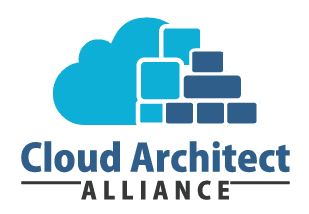
What does it take to truly anchor Cloud in an organization? How do you manage organizational change while at the same time ensuring all stakeholders buy in and don’t jump ship along the way? Or, alternatively, how do you ensure the benefits of Cloud can be fully utilized? Many organizations that enthusiastically start with Cloud adoption, eventually come to the conclusion they didn’t properly think about how such an endeavor should benefit the organization. The results can be disappointing, which may eventually harm the organization in the long run, as Cloud adoption is put on the backburner by business owners.
Luckily, such tragedies can be avoided. Stakeholder management is really important for any Cloud transition to succeed. Most Cloud adoption trajectories that fail do so because stakeholders have not been engaged properly. Whether its prior, during or after the transition: a lack of commitment from organizational leadership and the business will almost certainly result in failure.
Stakeholder alignment
What then, is a Cloud Architect to do? Even in midsize organizations, managing all stakeholders can be a fulltime job, let alone in an enterprise with a global reach. This is the purpose of the Cloud Business Office. Alignment of Cloud goals towards business goals and the strategic and tactical execution towards these goals requires strong alignment at a stakeholder level. The purpose of the Cloud Business Office is to oversee and govern the public Cloud adoption within the organization. And needless to say, the Cloud Architect won’t be the only one to staff the Cloud Business Office. However, a Cloud Architect may very well be the chairman of the Cloud Business Office.
Before we zoom in on the Cloud Business Office itself however, we need to take a step back and think about how people can be motivated. Some individuals are inclined to resist change, while others will happily jump aboard new projects that are aimed at organizational change. It is therefore important to make sure a Cloud transition is inclusive and sufficient attention is paid to cultural change. We’ve elaborated on culture and behavior in our publication ‘The High Performing Cloud Architect’, which is available for download here.
No CISO left behind
Being inclusive means engaging all stakeholders, including the often overlooked colleagues of procurement, who might delay Cloud adoption if they haven’t been informed in a timely manner. Another example of an important stakeholder that needs to be engaged but might be (conveniently) forgotten is the CISO or someone with a similar role. Failing to engage him or her can be a costly mistake, as the CISO can provide indispensable input and has an important role to play to ensure Cloud can be fully integrated into the business in a safe and compliant way. This will contribute to stakeholder commitment in the long run, as security incidents tend to undermine the trust people have in technology, especially if this technology is seen as ‘new’ or ‘immature’.
Knowing which way the wind is blowing
A more ethereal challenge when it comes to stakeholder alignment is that a great many people do not trust Cloud, think its not secure, think they have no reassurance data is not used for other purposes without their consent and often do not fully understand the intent of a Cloud transformation. Taken together these factors may prove to be serious impediments to Cloud adoption. This is also why many national governments or financial institutions, for example, fail to properly make a digital transition. Laws and regulations compel decisionmakers to stick to what they know, and what they know in this case often poorly fits with the way the wind is blowing.
Therefore, it not only is important to make sure the intent of Cloud adoption is fully understood, but also to be transparent and make sure trust is earned and retained. People have to be brought onboard in way they understand and feel comfortable with. They need to be able to extend their trust to the Cloud Architect and the Cloud Business Office, in the full conviction that risks, compliance and governance have been taken care off.
Creating a cadence
This brings us back to the Cloud Business Office itself. The Cloud Business Office consists of a collection of stakeholder experts from within the organization that all represent a different role. Based on our experience, at the very least, these stakeholders need to be part of the Cloud Business Office:
- Legal
- HR
- CISO
- CFO
- Procurement
- Head of Delivery
- Head of Infrastructure
- Risk & audit leader
Of course, in some organizations, other stakeholders may need to be engaged. But the stakeholders listed above should not be left out if an organization wants to successfully adopt Cloud. Next to that, it is of crucial importance all these people meet on a weekly basis, creating a cadence. There will be many, many questions, which all need to be taken seriously to foster support for the transition. People need to fully understand what the goals of the transition are, to ensure they will not resist the transition due to a lack of knowledge. Last but not least, eventually, the engineers that will be responsible for building the Cloud architecture need to be involved and have a clear understanding of the roadmap.
Transitions delayed are transitions denied
As we hopefully have shown in this article, two things are of the greatest importance when it comes to stakeholder management. The first is to ensure the right stakeholders are involved: there should be a bare minimum of roles in an organization that are engaged to work on a Cloud transition. Secondly, all stakeholders need to understand the intent of a Cloud transition, trust it is the right thing to do and be fully informed about what is happening, why these things are happening and how this will impact their role, team(s) or department(s).
We firmly believe that many issues regarding Cloud adoption and organizational resistance have to do with a lack of knowledge and as a result, a lack of confidence in a desirable outcome. Any transition is hard. In an organizational context, transitioning to the Cloud may be one of the hardest things to do. Many factors come into play, and there would be no shame in being overly cautious or postponing Cloud adoption as a whole. But transitions delayed are transitions denied. When stakeholders are properly engaged, at least one major hurdle has been overcome.
